21 Types of Tall Succulents (With Pictures)
-

- Last updated:

Succulents are popular plants grown as indoor or outdoor plants. Most are low-maintenance and tolerant, meaning you can enjoy them for a long time.
Among the many groups are tall succulents like yucca, snake plant and the mighty baobab tree. All these reach different heights but are taller than those adorable succulents you come across at plant gardens.
This article covers different types of tall succulents that you can grow at home. Most require full or partial sun exposure outdoors and indirect sunlight indoors. The plants are tolerant and do well in well-draining soil.

The 21 Most Common Types of Tall Succulents
1. Yucca
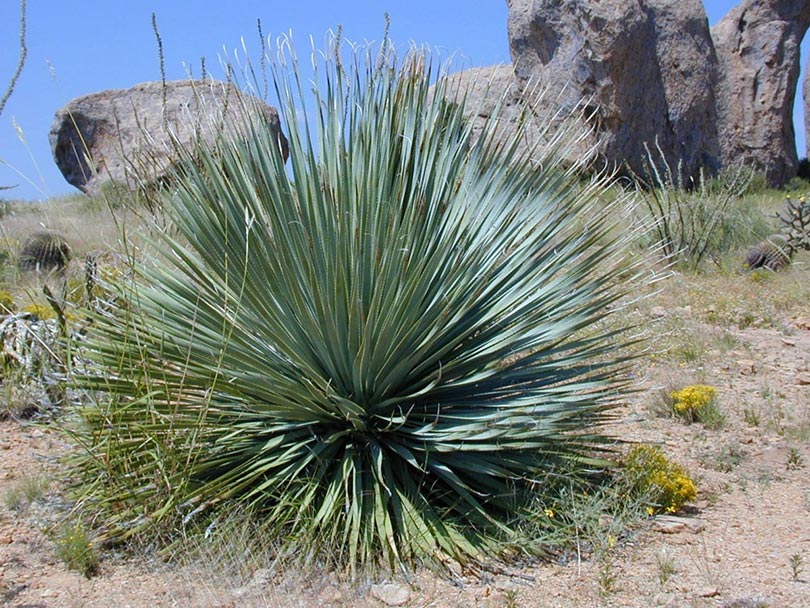
| Origin: | North America |
| Height: | 30 feet |
| USDA Hardiness Zone: | 5 to 11 |
Imagine owning a tall succulent that develops pointy leaves that resemble swords. That’s the yucca plant, which is native to North and South American desert climate areas.
As a houseplant, this succulent is low maintenance drought tolerant. It grows to be 30 feet tall with proper light, water, and fertilizer. This means you might want this succulent to grow outside so it can reach its full height. Watering is best done occasionally, and you can opt to leave the plant to dry out before watering.
2. Snake Plant

| Origin: | Tropical Africa |
| Height: | 8 feet |
| USDA Hardiness Zone: | 9 to 11 |
The snake plant gets the top award for being one of the most patient, low maintenance and tolerant plants. There are no complications when it comes to taking care of snake plants growing indoors.
There are more than 70 known species of snake plants. The plant grows to have stiff leaves that are quite fibrous. It’s an evergreen plant with dark green leaves with yellow edges when mature.
3. Fire Sticks
| Origin: | North Madagascar, Tropical Africa, India, Arabian Peninsula |
| Height: | 25 feet |
| USDA Hardiness Zone: | 9A to 10A |
The fire sticks is a tall evergreen succulent that grows in the form of a shrub. It resembles a thicket with some amazing hues. On it will be lots of thin vertical branches with reddish-gold color.
It’s possible to grow fire sticks indoors but pick a spot that gets lots of indirect sunlight. Outside, the plant looks amazing as part of lawn landscaping.
4. Ocotillo
| Origin: | Colorado Desert, Sonoran Desert, Chihuahuan Desert |
| Height: | 20 feet |
| USDA Hardiness Zone: | 8 to 11 |
Ocotillo is a succulent that works well to shape gardens with proper maintenance. This beautiful and captivating cactus is protected. Therefore, it’s illegal to cut when you come across them in the desert.
It thrives in full sun exposure and well-draining soil. The succulent is a slow grower, but it blooms to produce stunning tube-like orange or red flowers. It has bright green leaves all over the cane.
5. Fishhook Barrel Cactus
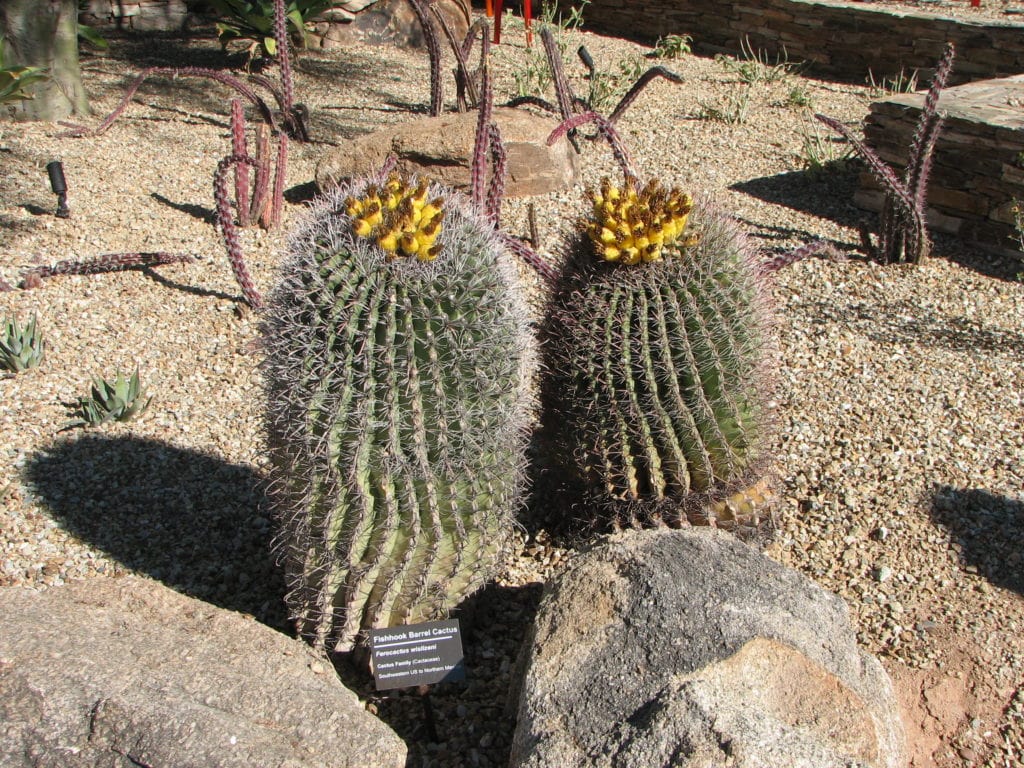
| Origin: | North Mexico and South US |
| Height: | 6 to 10 feet |
| USDA Hardiness Zone: | 9 to 11 |
The fishhook barrel cactus is quite easy to spot among other tall succulents. It has a distinctive thick and barrel-shaped body covered in long-hooked spines.
It is a hardy plant that’s desert-tolerant and thrives in rocky areas in the wild. It can grow to be 100 years old and contains lots of moisture in the ‘barrel’.
6. Jade Plant
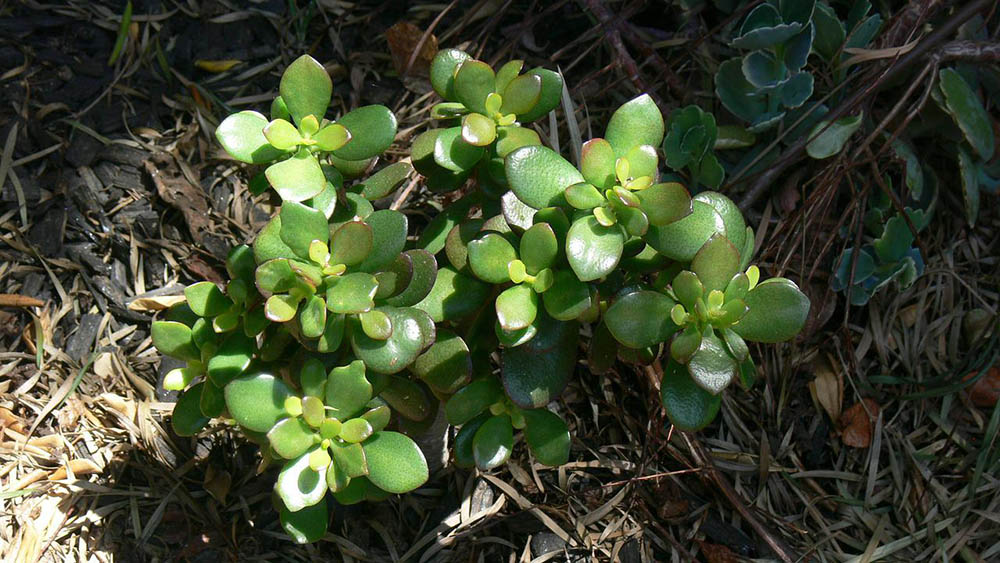
| Origin: | South Africa |
| Height: | 8 feet |
| USDA Hardiness Zone: | 10 to 11 |
Jade plant is a low maintenance tall succulent that’s quite popular as a houseplant. You can grow it in a pot indoors since it can survive even in low light conditions.
The plant produces evergreen branches that harbor thick and shiny jade green leaves. It blooms to produce pink or white flowers shaped like stars in winter.
It’s possible to grow more jade plants from cuttings of the main plant through propagation.
7. Organ Pipe Cactus
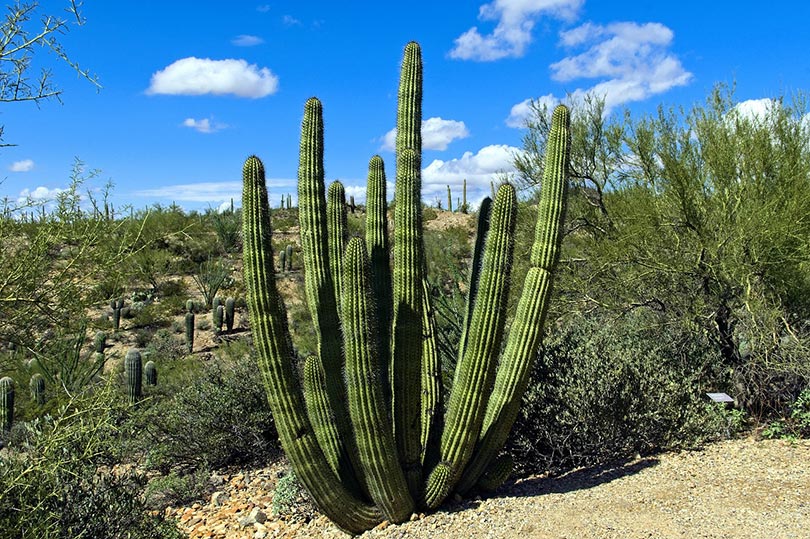
| Origin: | South Arizona and Mexico |
| Height: | 26 feet |
| USDA Hardiness Zone: | 9 to 11 |
Among larger species of succulents is the organ pipe cactus that looks so majestic out in the bare deserts. It thrives in rocky areas, so you can plant it as part of a rock garden.
Unlike other succulents that have leaves, this plant grows vertical tubes that are evergreen. These resemble the pipes of a church organ hence the name. During the blooming season, you’ll observe some lovely white flowers that grow on top of each limb.
8. African Baobab Tree

| Origin: | Africa, Australia, Southwest Asia |
| Height: | 59 feet |
| USDA Hardiness Zone: | 9 to 11 |
Did you know that the African baobab tree is the world’s tallest succulent? This is mainly because a huge percentage of its trunk stores moisture, which it needs to survive drought conditions.
This giant succulent is very thick and has big tapering branches growing on top. The ideal area to grow this tree is in well-draining soil and rocky ground. When grown in a container, you have to consider moving it outside after it outgrows the indoor container conditions.
9. African Milk Tree

| Origin: | Central Africa |
| Height: | 8 feet |
| USDA Hardiness Zone: | 10 to 12 |
The African milk tree is a fast-growing tall succulent grown commercially as a hedge. This evergreen plant is also known as the friendship cactus.
It grows triangular-shaped stems with three sides that have seemed ridges. There are lots of thorns on the ridges, while its leaves are the shape of a teardrop. Since it grows fast, it’s a good landscaping succulent that delivers drama to a garden.
10. Madagascar Palm
| Origin: | Southern Madagascar |
| Height: | 15 feet |
| USDA Hardiness Zone: | 9 to 11 |
South Madagascar is home to the Madagascar palm. While this isn’t a member of the palm trees, it resembles them. The succulent grows a long palm-like trunk with evergreen leaves at the top.
The Madagascar palm rarely grows branches and only features a long trunk. It can grow as a houseplant in well-draining soil in a container.
Keep it in an area with bright indirect light and warm temperatures indoors. This succulent loves warmer climates.
11. Aloe Vera
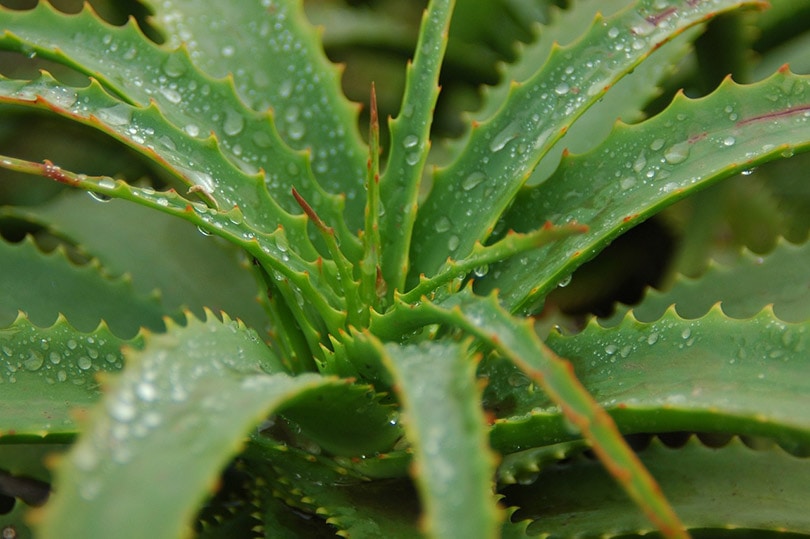
| Origin: | Arabian Peninsula, Madagascar, Africa |
| Height: | 10 feet |
| USDA Hardiness Zone: | 8 to 11 |
Aloe vera is among the most popular houseplants in the country. Many people grow it for its many uses around the house. There are over 500 species of aloe vera across the world.
It’s a stemless plant that loves bright indirect light. The plant grows to form a large rosette with large leaves. These leaves are harvested for their useful gel which has even pharmaceutical uses.
It’s an evergreen succulent that can thrive outside and indoors in a container.
12. Desert Rose
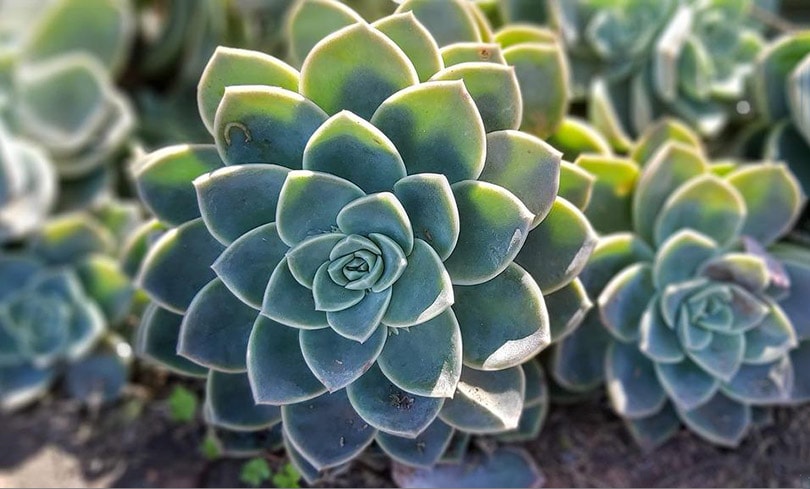
| Origin: | Sub-Saharan Regions and Arabian Peninsula |
| Height: | 9 feet |
| USDA Hardiness Zone: | 10 to 11 |
Among the slowest growing tall succulents is the beautiful desert rose. The plant grows a maximum of only 12 inches every 12 months. This is why some people grow it as a bonsai plant inside their homes.
The desert rose has a thick trunk and thin leaves that are quite delicate. It blooms to produce amazing pink trumpeting flowers. When grown indoors, it prefers warm temperatures and bright indirect light. It’s an amazing type of ornamental plant that can even thrive outdoors in a garden setting.
13. Palmer’s Agave
| Origin: | Southeastern Arizona, North Mexico, and South New Mexico |
| Height: | 4 feet |
| USDA Hardiness Zone: | 7b to 11b |
Imagine having a succulent whose flower stalk is the main center of attraction. The Palmer’s agave flower stalk can grow to 10 feet and the succulent forms a dense rosette when mature.
The foliage of the succulent consists of thin and long bluish-green leaves. Outside, the plant prefers full sun exposure, but you can grow it in a container indoors with lots of indirect light.
It grows a small fruit that resembles a banana, and it attracts lots of bees.
14. Senita Cactus
| Origin: | Mexico and Arizona |
| Height: | 15 feet |
| USDA Hardiness Zone: | 8b to 11b |
The Senita cactus is another fine example of a hardy tall succulent. It grows by forming a strong base from which stems emerge growing vertically. From each stem, you’re likely to observe up to 15 ribs. The tip of the stem has hairy beards.
This is one unique succulent that blooms, and its blossoms only open at night. It produces pale pink flowers. The plant thrives in well-draining soil. The succulent is drought-resistant but it’s better to protect it from extreme cold exposure.
15. Prickly Pear
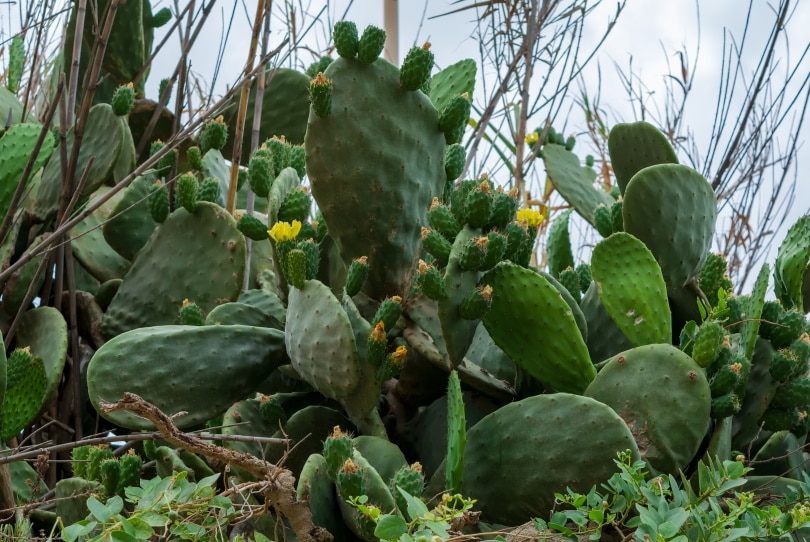
| Origin: | The Americas |
| Height: | 8 feet |
| USDA Hardiness Zone: | 9 to 11 |
Drought-tolerant succulents tend to be low maintenance. A good example is the prickly pear, which is ideal for a garden in an arid area. The tall succulent loves a sunny area where it gets unlimited exposure; however, it can also grow indoors in containers.
This succulent grows fast, producing some detachable spines. There are over 180 species of the prickly pear that you can choose from. Remember to always wear gloves when you want to handle it because of the sharp spines.
16. Queen of the Night
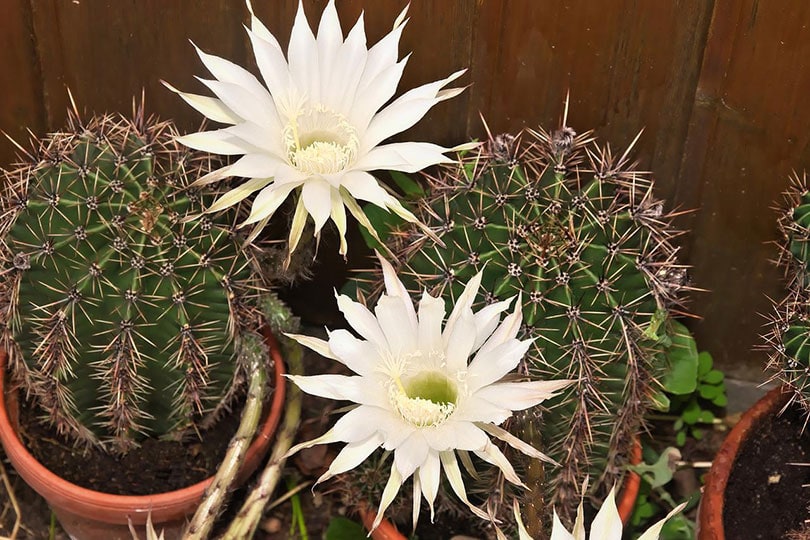
| Origin: | Mexico |
| Height: | 10 feet |
| USDA Hardiness Zone: | 10 and 11 |
The Queen of the Night is a type of perennial succulent that’s possible to have as a houseplant. Unlike other succulents that stand on their own, this succulent relies on others for support.
One of the most unique features that give this succulent its name is the fact that it blooms for one night in a year.
Instead of leaves, the plant has stems full of moisture, which helps it be drought tolerant. It does well with partial shade in a garden and medium indirect light indoors.
17. Giant Agave
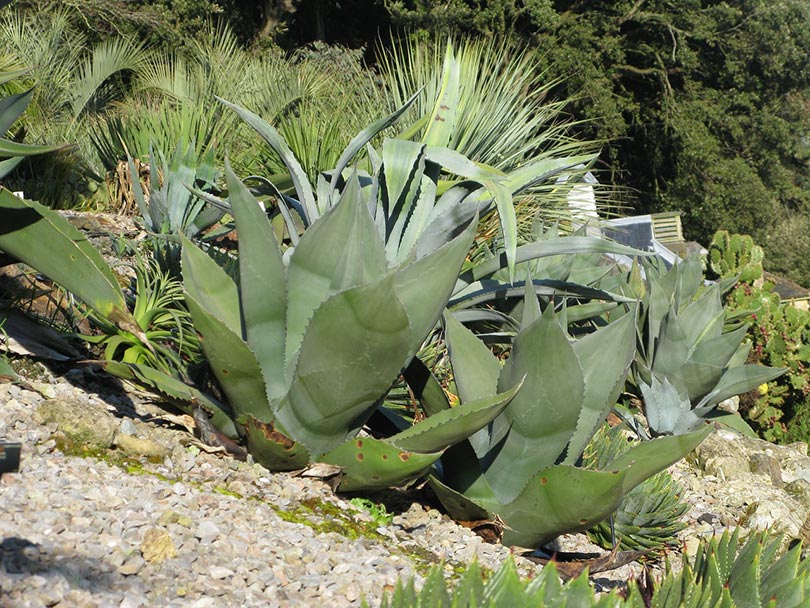
| Origin: | Hot parts of the Americas |
| Height: | 8 feet |
| USDA Hardiness Zone: | 9 to 11 |
The giant agave is an evergreen plant whose leaves can spread up to 12 feet. The leaves of a fully mature succulent are dark green with sharp serrated margins. Though the leaves are fleshy, you’ll notice these tend to be flat.
As a monocarpic plant, the giant agave is among flora that blooms once every 15 to 25 years. It produces a flower stem that grows vertically to a height of 13 feet. This low-maintenance succulent is also cold hardy.
18. Century Plant

| Origin: | Texas and Mexico |
| Height: | 10 feet |
| USDA Hardiness Zone: | 8a to 11b |
The century plant has a lifespan of about 30 years despite its name. It has gray-green leaves, each with a prickly margin. At the tip of the leaves is a heavy spike with the capacity to pierce skin deeply. When the plant is on its last days, a tall stalk appears, producing lots of yellow blooms.
It’s among the few plants that grow indoors and can tolerate direct sunlight exposure. However, it’s better to have it in colder temperatures during dormancy in winter.
When growing the century plant, use porous sandy soil that dries out faster.
19. Eve’s Needle
| Origin: | South America |
| Height: | 13 feet |
| USDA Hardiness Zone: | 9 to 12 |
As a tall succulent, the Eve’s needle can also spread to about 10 feet. It has numerous cylindrical evergreen leaves with lots of sharp white spines. When new growth appears, it doesn’t have spines, but as it continues to grow, they start to appear all over the leaves.
This is among the fastest growing succulents. It is low-maintenance and drought-tolerant but requires protection in winter since it’s easily affected by frost. It thrives in well-draining soil and full sun exposure with only a little shade.
20. Crown of Thorns

| Origin: | Madagascar |
| Height: | 6 feet |
| USDA Hardiness Zone: | 9 to 11 |
Also known as the Christ plant, the Crown of Thorn is a tall succulent that’s quite adaptable. It’s a low-maintenance plant with green leaves and blooms to produce colorful flowers. While you can grow it as a houseplant, note that it is highly toxic to pets and people.
It’s possible to grow the Crown of Thorns from seed; however, propagation takes less time than germination. With a few cuttings, you can grow new succulents in well-draining soil. Always wear gloves when handling the plant since its sap causes skin and eye irritation.
21. Elephant’s Ears/Elephant’s Bush

| Origin: | Mexico |
| Height: | 20 feet |
| USDA Hardiness Zone: | 10 and 11 |
The elephant’s ear has lots of glossy chubby leaves that grow into a bush. It does well as a houseplant in an area with plenty of indirect light and warm temperatures. In the wild, elephants love feasting on this succulent; however, it makes for amazing indoor plants at home.
Use porous succulent mix for this plant since it prefers dry conditions to keep growing. It’s better to use containers with large or numerous drainage holes. Direct sun exposure is a no-no since the hot rays burn the delicate succulent leaves.

Final Thoughts
There are lots of tall succulents you can grow outside in your garden or indoors in containers. These range from those with leaves to those with stems and lots of unique features. Most tall succulents are drought-tolerant and can keep growing with minimal maintenance.
Featured Image Credit: MonikaP, Pixabay
Contents
